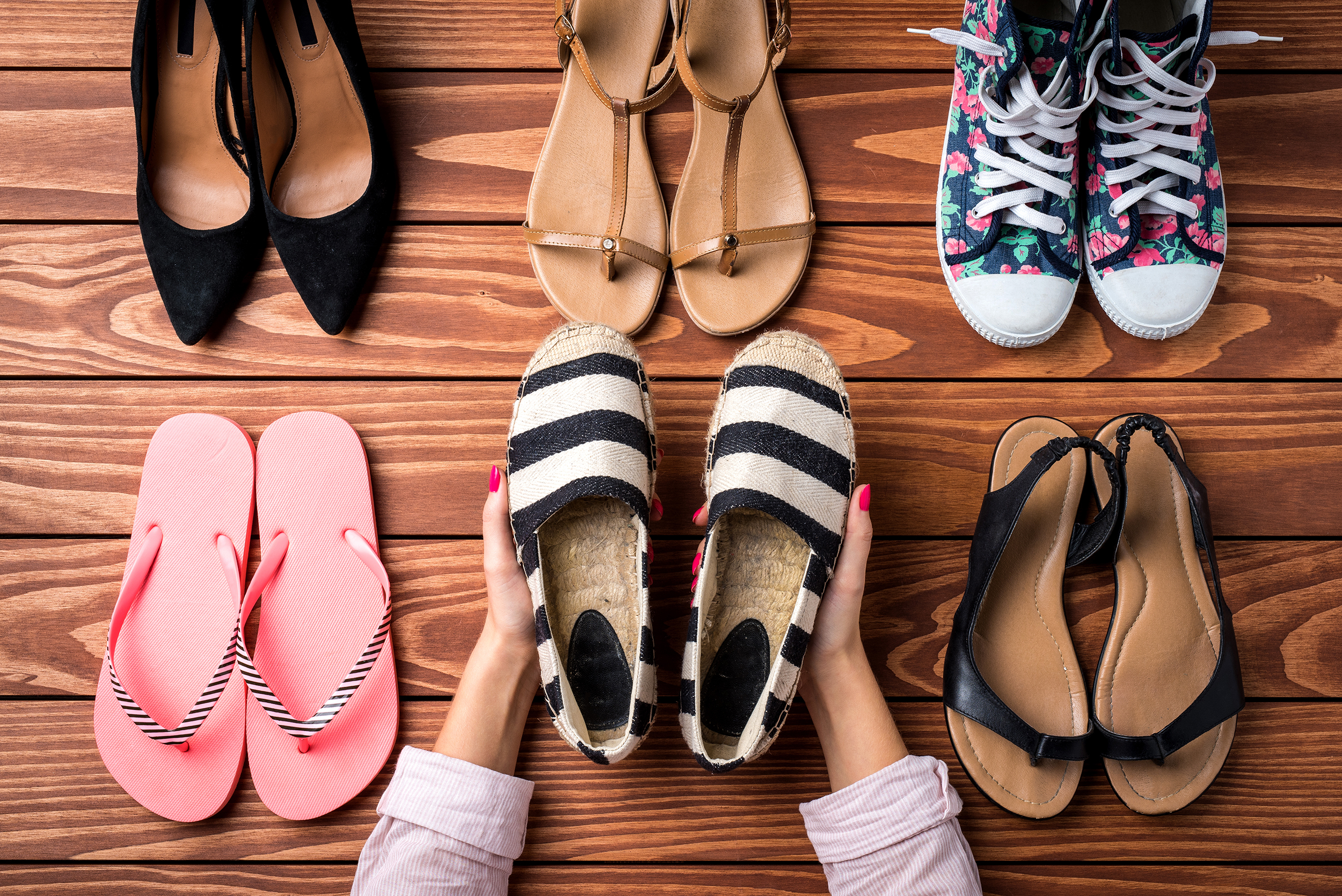So long, snow boots—warm weather is here at last! But while you’re skipping through summer in your saucy sandals or padding through the sand in your favorite flip-flops, what toll will your seasonal footwear take on your hardworking feet? Nearly eight of every 10 Americans have experienced foot problems caused by wearing uncomfortable or ill-fitting shoes, according to the American Podiatric Medical Association (APMA).
“Many of us increase our activity levels in the summer, and that could mean an increased risk of foot and ankle discomfort or even injury,” says Marcus Yetter, DPM, a podiatrist at Saddleback Podiatry Group and APMA member. “Plus, many of the shoes we enjoy wearing during warm weather, like flip-flops and sandals, may not always be the best choice in terms of foot health.”
Once considered only beach wear, flip-flops have gone fashionable, now showing up in offices, classrooms, and social events when warm weather arrives. But some styles may be more harmful to your feet than others and can cause blisters and foot pain. Remember the following tips when shopping for flip-flops:
- Forego vinyl or rubber and look for high-quality, soft leather, which will minimize the potential for blisters and other irritations. APMA certifies some footwear products with its Seal of Acceptance, which tells you a team of APMA podiatrists has evaluated the footwear to ensure it allows the most normal foot function and promotes foot health. View the list of products by visiting www.apma.org/seal.
- Like all shoes, the flip-flop should bend at the ball of the foot. Don’t buy it if the flip-flop bends completely in half.
- Straps should fit comfortably but not be too loose or too snug. Your foot should not hang off the edge of the flip-flop. The thong between the toes should not be irritating.
- If last year’s flip-flops show severe signs of wear, toss them and buy a new pair.
- Don’t wear flip-flops for long walks; even the sturdiest styles don’t offer sufficient arch support and shock absorption for extended wearing. And never wear them when doing yard work or playing sports.
- “If you suffer from heel pain or diabetes, avoid flip-flops altogether,” says Dr. Yetter.
As popular as flip-flops, sandals are versatile options for warm weather footwear, but you don’t have to sacrifice foot health to look good in them. You should choose a sandal as much for its comfort and support as its fashion appeal. Fortunately, following a few simple steps can ensure your feet look and feel good in the summer’s hottest fashion sandals:
- Flats and slides are comfy and convenient, but prolonged wearing and inadequate support and cushioning may lead to arch and heel pain. Use cushioned inserts to improve sandals’ support, and choose styles that have soles that don’t twist excessively.
- Gladiator sandals are back in step this season, but some styles may irritate the toes and cause calluses on the heels. “Choose natural materials like soft, supple leather,” Dr. Yetter suggests. Toes and heels should not hang off edges.
- Platforms and high heels may make your legs look great, but they can also put you at risk of foot and ankle injuries. Opt for heels less than two inches high, which offer more stability.
- Rubber soles with good traction are a must for anyone wearing wedges or espadrilles.
- Peep-toe sandals can put a lot of pressure on your feet, causing bunions and hammertoes over time. Wear them for short periods only, and use toe inserts to improve comfort.
- Ankle-wrap sandals often lack true ankle support, and friction from the straps may cause blisters. Choose sandals with straps made of soft, breathable material like leather, cotton, or satin. Never wrap the straps too tightly.
If you experience persistent foot pain, see a podiatrist. Feet shouldn’t hurt all the time, and if they do, it may indicate injury, irritation, or illness.
Dr. Marcus Yetter, DPM, is a podiatrist at Saddleback Valley Podiatry Group in Laguna Hills, CA. Call (949) 768-9495 or visit www.saddlebackpodiatry.com to make an appointment. Visit www.apma.org to learn more about foot health and care.

